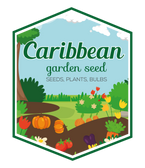HOW TO GROW CALADIUMS
Caladiums are heat-loving tropical perennials that have almost unparalleled foliage and make showy houseplants. The plant's large, heart- or arrow-shaped, paper-thin leaves come in a striking array of colors and patterns. A mass of caladium is an explosion of whites, greens, reds, and pinks that are mottled, veined, and striped. They can easily offer the visual impact of having planted flowers while only being foliage plants.
Though they are grown mainly for their foliage, they do produce some flowers, which start in the form of spathes, or spikes. Plant these tubers in the springtime after the threat of frost has passed. As striking as they are, caladium plants are toxic to animals and humans. To ensure the health and longevity of your caladium plants, it is important to provide them with adequate sunlight and water. These tropical perennials thrive in warm, humid environments, so be sure to keep them in a well-lit area with indirect sunlight.
Caladium Care
Many gardeners use masses of these striking plants as summer accents and conversation pieces. Indoors or out, caladiums are seasonal tuberous plants that grow foliage from spring into autumn, peaking in the summer. Cut off any spathe as soon as they appear to ensure that all of the plants' energies are used for their gorgeous leaves. Caladiums' rest period comes in the autumn or winter. Their rest period isn't determined by temperature or light cycle, but by how long the plants have been growing.
Caladiums are seasonal plants even in the tropics, where gardeners plant them in the spring and summer months when they'll thrive in the heat and humidity they require. Unless you live in zones 9 to 11, you should plan to grow them as annuals, or dig up the plants' tubers at the end of the growing season and store them for the winter.
GROWING CALADIUMS INDOORS
When grown indoors, they do best with lots of heat, bright but indirect light, and plenty of humidity. Even under the best conditions, caladium foliage lasts only a few months before the leaves start to die back and the plant goes dormant again, which is normal.

![[Seeds] - Caribbeangardenseed](http://caribbeangardenseed.com/cdn/shop/files/gift-card-gift-card-1_1024x1024_dfa857db-9150-4315-a362-7f0bb3fb9c47_60x28.png?v=1722895789)